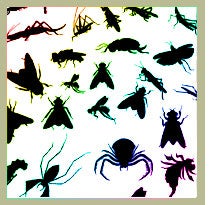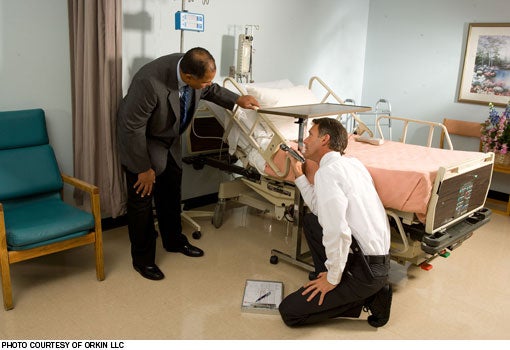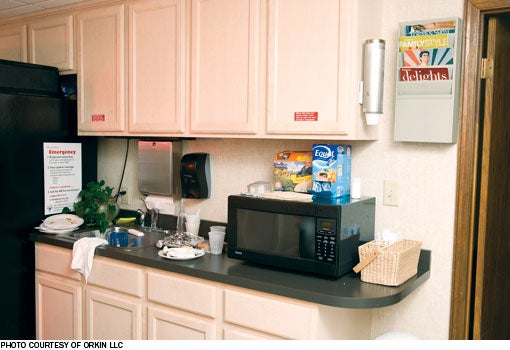Controlling critters
 Pest management is crucial to a health care facility. In addition to threatening the health and safety of staff and patients, disease and pathogen transmitting pests like rodents, cockroaches and flies can threaten a facility's reputation and credibility.
Pest management is crucial to a health care facility. In addition to threatening the health and safety of staff and patients, disease and pathogen transmitting pests like rodents, cockroaches and flies can threaten a facility's reputation and credibility.
Pests such as flies, rodents and cockroaches are all particularly dangerous for health facilities. Flies transmit more than 100 known pathogens, including E. coli, salmonella and shingles, and leave behind bacteria every time they land. Cockroaches also carry E. coli and salmonella, and rodents can spread bacteria in their droppings.
Both you and your pest management provider have roles to play in ensuring your facility has a strong defense against pests. Your pest management provider is responsible for performing comprehensive inspections to determine prevention and treatment methods, sharing written service reports to offer corrective recommendations and responding quickly to pest emergencies.
It is your role, in turn, to ensure the premises are available and accessible for the pest management provider, to correct deficiencies in service reports and to conduct regular staff training. Ultimately, this team-oriented cooperation will lead to an integrated pest management (IPM)-based approach to pest control.
What is IPM?
IPM is an environmentally friendly approach to pest management that differs from traditional practices. Instead of relying on reactive measures to control pests, which are often chemical treatments, IPM focuses efforts on proactive measures to prevent pests in the first place. By implementing activities like sanitation and facility maintenance on the front end, you'll have fewer pests and less need for treatment. And, because sanitation and facility maintenance are the foundation to a successful IPM program, it's crucial to have your staff on-board and well-trained.
However, even the most sophisticated prevention and control techniques will be futile if your employees aren't supporting your efforts. As the eyes and ears of your facility, it's important to equip them with the knowledge they need to carry out IPM initiatives as well as an understanding of the crucial role they play in its success.
Your pest management professional may also provide employee-training resources, which often include information about detailed documentation, pest sighting protocol and environmentally friendly treatment methods.
 |
| Work with your staff and pest management professional to assess the different areas of your facility and determine if your proactive measures are helping to prevent pests. |
Sanitation, maintenance and construction
Sanitation and facility maintenance are the most important factors in an IPM program and require ongoing participation from your staff. Effective sanitation reduces basic pest needs like food and water, while facility maintenance helps deny them shelter and keep pests outside where they belong.
Incorporating the following sanitation steps will significantly increase your chances of beating pests:
- Eliminate food and water sources for pests by immediately cleaning up food and drink spills and wiping down surfaces in waiting areas, patient rooms and other areas regularly. Pests need very little food or water to survive, so even the smallest spill can sustain them.
- In kitchens and employee break rooms, keep food in tightly sealed containers and sink areas free of dirty dishes.
- Regular cleaning materials can often include harsh chemicals, so it's a good idea to use an organic cleaner – particularly around sensitive patients – as they contain enzymes that break down the grit and grime that can feed pests.
- Regularly dispose of trash in sealed bags and keep all trash cans tightly sealed when not in use. Keep waste disposal areas as far from the building as possible, and do not leave trash or empty boxes sitting outside your facility, as they can provide food and shelter for pests.
- Monitor for moisture leaks from appliances or HVAC units. Even condensation on pipes can be enough water for mice and other pests, so contact a maintenance professional to make repairs if necessary.
Additionally, incorporating the following facility maintenance steps will significantly increase your chances of beating pests.
- In most hospital or health care environments, doors at the front entrance or emergency room often open and close regularly. Wherever possible, it's important to keep all doors and windows closed to keep pests out, so consider adding double doors or automatic doors in these areas. However, pests can still enter your facility through these entrances, so it's a good idea to install air curtains, plastic strip doors or weather stripping to further protect against pests in frequently used entryways, as cockroaches and other crawling pests can squeeze through openings as small as 2 millimeters.
- Mice can fit through holes as small as a dime and rats only need an opening the size of a quarter to access a building. Look for cracks and crevices in the foundation of your building and seal them with weather-resistant sealant. For extra protection, add copper mesh or steel wool to prevent rodents from gnawing through the sealant.
- Trim vegetation at least 1 meter from the facility and remove ground-covering plants such as ivy and mulch if possible, as they provide hiding places for pests. Also consider installing a gravel strip around the building about 75-centimeters wide to prevent rodents, who don't like to be out in the open, from getting close to your building. This also creates an uneven and unpleasant surface for crawling insects.
- Replace outdoor lights with sodium vapor lights, which are less attractive to flying insects than mercury-vapor or incandescent bulbs. Consider placing mercury-vapor lighting in any fixtures situated at least 30 meters away from the facility to help draw pests away from the building.
Finally, if building a new facility or doing construction on a current one, there are several important tips to keep in mind.
- At a new site, utilize pest monitors to assess pest populations in the area so you can take steps to reduce their threats onsite.
- When selecting building materials, choose non-cellulose materials to deter termites, and have a pest management professional regularly inspect the property.
- Other pests can feed on the fungus that accumulates on wet wood for more than a year, so cover up all building supplies at the close of each work day, and it's generally best to start construction during the driest season of the year.
- It's also essential to keep the site as clean as possible, so remember the above sanitation tips during construction.
 |
| Keep food in tightly sealed containers and sink areas free of dirty dishes in kitchens and employee break rooms. |
Monitor for pest activity
Teach your staff where to look for pests and what to look for, as well as how to identify and report pest sightings. Staff members should always be on the lookout for signs of pests, particularly in "hot spots" throughout the facility, or places where pests are most attracted.
These include any areas that contain food, water and shelter – such as kitchens, patient rooms, dumpster and recycling areas, employee break rooms and washrooms. Train your staff to look for droppings, cast skins that have been shed by pests, webbing and live or dead pests, as these are all signs that pests might be present in your facility. Gnaw marks and rub markings along walls are signs that rodents may be present in your facility.
Taking preventive steps against pests with sanitation and facility maintenance can significantly reduce your chances of problems, but if your staff does find signs of pests and you suspect an infestation, alert your pest management professional immediately to prevent the problem from growing.
You can also ask your pest management provider to install monitoring devices such as traps or glue boards to track insects and rodents. Be sure to monitor the traps regularly for any signs of pests and alert your pest management professional immediately with any findings, which can help determine the volume and type of pests present.
Don't forget to evaluate your program on a regular basis to determine problem areas and solutions. Work together with your staff and your pest management professional to assess the different areas of your facility and determine if your proactive measures are helping to prevent pests.
Finally, recognize and incentivize the efforts of employees to reduce pest problems, and you and your staff will win out against pests.
Bill Melville is quality assurance director for Orkin PCO Services, Mississauga, Ontario, Canada. He can be reached at bmelville@pcocanada.com.


